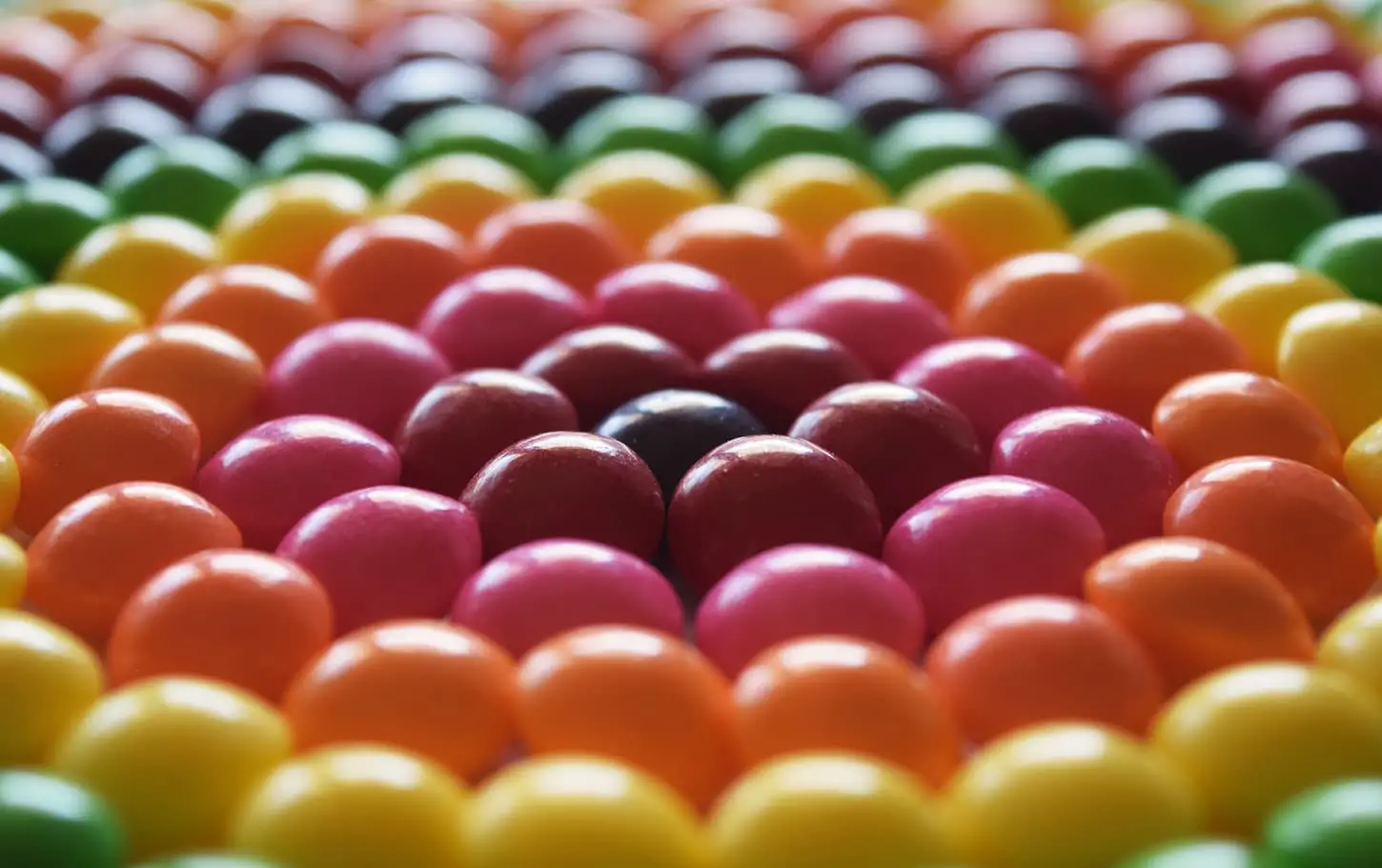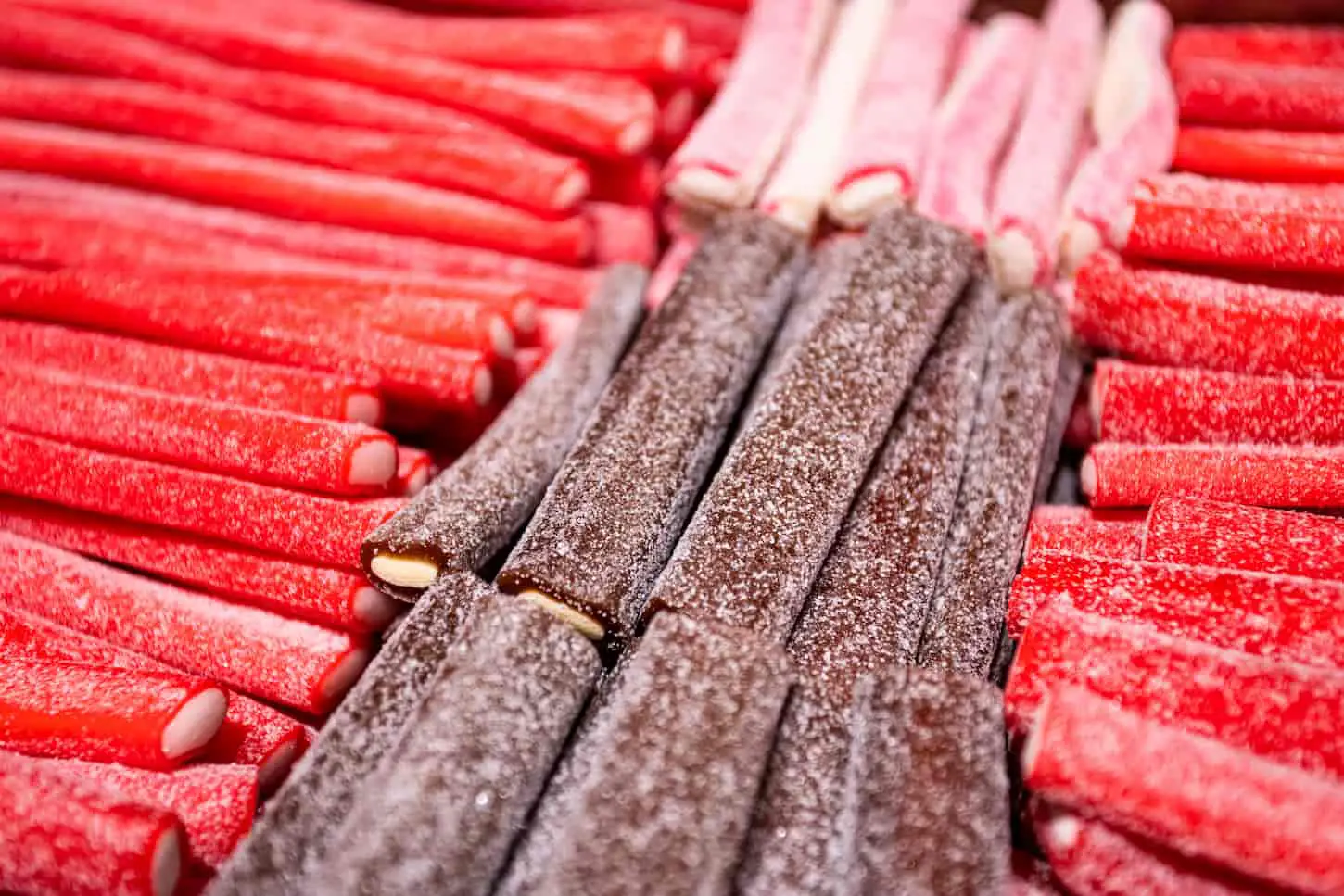Have you recently purchased a home freeze-drier and aren’t sure what to do with it? Or perhaps you have a sweet tooth and would love to try something new? Freeze-dried candy can be exciting, and you may have many questions regarding the process, the benefits, possible negative effects, and the types of candies you can freeze-dry. But what exactly is freeze-dried candy?
Freeze-dried candy refers to candies that have been preserved using a freeze-drying machine. Freeze-dried candy will have any extra water or moisture removed, enhancing the sweetness of the treat. Popular candies to freeze-dry include skittles, taffy, marshmallows, and gummy candies.
Freeze-dried candy is packed with flavor and has a unique sponge-like texture. Now that you have an overview of freeze-dried candy, let’s talk more in-depth about what freeze-dried candy is and answer some burning questions.

Quick Facts about Freeze-Dried Candy
Freeze-dried candy is any type of confectionery that has undergone this freeze-drying process. Freeze-dried candy has a different texture and taste compared to regular candy. There are many benefits to freeze-drying your candy!
The process of freeze-drying candy is fascinating and similar to dehydration. In its simplest form, freeze-drying is a three-step process. First, your food is frozen at a temperature of approximately -30 and -50 degrees Fahrenheit.
Next, a vacuum is created within the freeze-drier. This warms the freeze-drying chamber and allows the water from the food to evaporate. If you didn’t know how your beloved home freeze-drier worked, now you do!
The fact that so many of us can freeze-dry our favorite snacks with the push of a few buttons is amazing and something you shouldn’t take for granted.
Freeze-drying your food is an excellent preservation method; freeze-dried foods can have shelf lives of months if not years! Freeze-dried candies are a great way to experiment with your home freeze-drying machine.
What Are the Best Candies to Freeze-Dry?
Here is a list of some of the types of candies that freeze-dry best:
- Skittles
- Saltwater Taffy
- Marshmallows
- Milk duds
- Gummy candies like peach rings and sour worms
- Hard candy like Jolly Ranchers
- Fruit (okay, technically this isn’t candy, but freeze-dried fruit tastes like candy!)
Most of these candies will expand to be much bigger than their original size so be sure to spread them out evenly in your freeze-drying machine. For larger candies like the saltwater taffies and jolly ranchers, you may want to chop these into smaller pieces. Most people say cutting them in half is required, though even cutting them into thirds or quarters may be better.
Additionally, you will want to find an airtight container large enough for your expanded candies. Freeze-dried foods should always be stored in airtight containers to prevent moisture from ruining them.
This list isn’t exhaustive and there may be candies unique to your hometown that would taste divine when freeze-dried. Once you get the hang of freeze-drying candies and other snacks, don’t feel shy about experimenting with new candies. With so many different candies on the market, there are innumerable types of flavors and textures that will have distinctive reactions when freeze-dried.
What Candies Can’t Freeze Dry?
Candies with a lot of chocolate, peanut butter, oil, or fat can’t freeze-dry well if at all. This includes Reese’s Pieces, Snickers, chocolate bars, small pieces of chocolate, and similar candies. These can be run in the freeze-dryer, but they won’t process well or extend the shelf life by much.
While there is plenty of wiggle room when it comes to what you can freeze-dry, there are a few types of candy that don’t taste the best when freeze-dried. The main type of candy that doesn’t freeze-dry well is chocolate.
Once the moisture has been extracted from the chocolate, the formula changes and the chocolate can become too oily and may crumble. Another food that does not freeze-dry well is peanut butter. With this in mind, many chocolate bars like Snickers and candies like Reese’s Pieces can’t be freeze-dried.
If you aren’t sure about freeze-drying a particular brand or type of candy that you have in mind, you can always look at the ingredients list to make an educated guess. As we’ve explained above, freeze-drying is similar to dehydrating in that the moisture is removed from the candy. This method of preservation is suited to foods that are lower in oil and natural butter.
What Does Freeze-Dried Candy Taste Like?
Freeze-dried candy tastes sweeter and richer than the original, as they are more concentrated due to the loss of water natural in freeze-drying. The candy may puff up or “explode” and no longer look like the original.
The benefit of freeze-drying your candy is that it makes your candies taste even better than before. Freeze-dried foods have a unique texture compared to their fresh counterparts, and this can add a twist to your favorite snacks.
Most freeze-dried candies will have an exceptionally concentrated flavor once all of the moisture has been drawn out in the freeze-drying process. You could find freeze-dried candies to be overpowering if you prefer more subtle flavors. Additionally, freeze-dried candies have higher concentrations of sugar so they are a little sweeter than what you may be used to.
What was once a mild orange skittle is now a tangy citrus explosion, sweet strawberry-flavored gummies are now a fruity, sugary treat, and fluffy marshmallows are now indulgent creamy confectionaries.
The concentrated flavors and sugary goodness coupled with the drier, sponge-like texture of the freeze-dried candy can make for an excellent snack. You could add a few freeze-dried candies to a bowl of homemade ice cream or yogurt to make your desserts even more exciting. Freeze-dried candies also make an excellent addition to your picnic or kid’s birthday party. The sponge-like texture can prevent sticky fingers while allowing your kids their sugar rush!

What Do Freeze-Dried Skittles Taste Like?
Freeze-dried skittles are more like crunchy, sugary candies than their regular small chewable counterpart. To me, freeze-dried skittles taste like the skittle was puffed out and dipped in powdered skittles to make it even sweeter.
Skittles are one of the most popular candies to freeze-dry and for good reason! Skittles are already known to be flavorful, chewable candies that are available in a myriad of unique flavor packs.
When freeze-dried, the moisture is drawn out of these small hard-shell candies, and they begin to expand to 2-to-3 times the size. This means that their hard outer shell will crack open to allow the chewy interior to expand. The texture of a freeze-dried skittle is fluffier and airier than chewy.
Does Freeze-Drying Candy Change the Calories?
Freeze-drying does not change the actual calorie count per candy, but it does remove the moisture and thus increase the overall calorie percentage. Freeze-drying candy also makes it easier to eat more candy, thus making it seem like the calorie count increases more dramatically than it does.
Freeze-drying candy changes the taste, texture, and composition of the candy. As freeze-dried candied tend to have more sugar and additives compared to regular candy, the calorie content also changes.
Freeze-dried candies tend to be higher in calories compared to regular candy. This applies to individual pieces of candy so be sure to take this into account if you’re trying to stick to a diet or maintain a certain lifestyle. High-calorie candies can be great for boosting your energy before a session at the gym or an afternoon run.
Is Freeze-Dried Food Bad for You?
Freeze-drying food is not adverse or dangerous for people; it is simply a way to store food for up to 25 years without having to worry about refrigeration. Freeze-dried foods can be safely stored at room temperature and then eaten when needed.
It’s also natural to worry about the negative effects of freeze-drying a particular type of candy. When the taste and texture change, does it change the way it affects your body?
There is plenty of false information on the internet regarding health and wellness, so don’t believe everything you read online. Try to look for posts that reference legitimate sources and have some sort of scientific backing. Additionally, look for reviews from trusted websites and bloggers.
If you’re worried about the sugar intake, try to avoid binging on freeze-dried candies. As we’ve mentioned above, freeze-dried candies can be higher in calories than regular candies. This means that they often contain higher amounts of sugar per individual candy than regular candies. Freeze-dried candies can be bad if you are prediabetic, diabetic, or your kids have trouble coming off the sugar high.
Pro tip: eating freeze-dried foods, especially freeze-dried candies, can constipate you like crazy. Make sure you drink plenty of water so that you don’t have to learn this the hard way.
Other than the concentrated sugar content, there may be higher concentrations of flavorings and additives in freeze-dried candies compared to regular candies. For most people, this should not cause any major adverse health effects. However, if you are concerned about the increased sugar and additives, you can speak to your family doctor or dietician about incorporating these candies into a balanced diet.
If you’re familiar with the freeze-drying process, preparing freeze-dried candies is a piece of cake! And even if you’re new to using a freeze-drier, the process is simple enough for beginners to understand.
Look for reviews and how-to posts from trusted websites and bloggers that can help. You can look through their process, which candies they liked, how they felt after eating the candies, and if they would recommend trying it out. And if you want my guide on how to freeze-dry candies and sweets, well there you go.
This is a fun, new way to create your own sweet treat which can be enjoyed as a snack or a welcome addition to a bowl of ice cream, yogurt, or fruit bowl.

Next Steps
Now that you know more about what freeze-dried candy is, make sure you read my guide on How to Freeze Dry Candy and Sweets at Home. Seriously. Go freeze-dry some skittles. They’re my favorites, followed closely by halved grapes.
And yes, I know grapes aren’t candy. But I think freeze-dried grapes are candy, so I’m going to count them anyway.
Resources
Learning from your own experience is essential, but learning from others is also intelligent. These are the sources used in this article and our research to be more informed as homesteaders.
- “5 Candies to Freeze Dry.” Harvest Right | Home Freeze Dryers | Freeze Dried Food Storage, 21 July 2020, harvestright.com/blog/2020/5-candies-to-freeze-dry.
- “Freeze Dried Candies and Desserts | Enjoy A Brand New Candy Experience @.” The “Freeze Dried Candy” Company, www.thefreezedriedcandycompany.com. Accessed 18 Jan. 2022.
- Starr, Kimberly. “How To Freeze Dry Candy and Sweets at Home.” Backyard Homestead HQ, backyardhomesteadhq.com/how-to-freeze-dry-candy-and-sweets-at-home. Accessed 18 Jan. 2022.